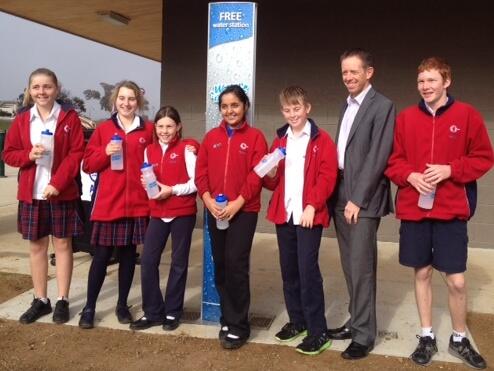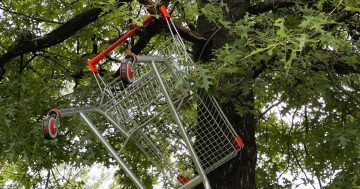Minister for Territory and Municipal Services, Shane Rattenbury, today released the results of Canberra-wide consultation on sites for 30 new drinking fountains to be progressively installed across Canberra in the coming months. The first was unveiled on Wednesday morning at the Harrison District Playing Fields.
“As part of the ACT Labor-Greens Parliamentary Agreement, the ACT Government is installing drinking fountains with refill taps in public places across Canberra in an effort to reduce the use of disposable bottles and increase water consumption,” Mr Rattenbury said.
“We have seen a fantastic response from the community throughout the consultation period. Over 600 Canberrans took part in our community consultation survey providing feedback on the project and offering input into the locations of the fountains. Some of the most popular locations include City Walk, Mount Ainslie lookout, the Events Terrace at the National Arboretum, Tuggeranong Town Park and along the Eastern Valley Way cycle path in Belconnen.
“Over 80% of survey respondents said that more drinking fountains would encourage them to carry a reusable water bottle, reducing plastic bottle waste caused by purchased drinks.”
“The drinking fountain unveiled today at Harrison District Playing Fields is the first of 10 to be installed at pre-selected sportsgrounds in Canberra, making it easier for members of the community to rehydrate by accessing fresh water for free.

Minister for Territory and Municipal Services Shane Rattenbury and children from Harrison Primary School. Picture from @ShaneRattenbury (Twitter)
“The second stage of the project will see the remaining 20 drinking fountains installed in areas with high levels of pedestrian activity.
Mr Rattenbury was joined by acting ACT Deputy Chief Health Officer, Dr Moira McKinnon who said, “Improving the availability of free drinking water across the ACT is an important part of the ACT Government’s Towards Zero Growth – Healthy Weight Action Plan.
“The new water fountains will have a positive influence on healthy drinking behaviour of Canberrans. By making it easier for people to fill up their water bottle in popular public places like shopping centres, parks and areas with high pedestrian traffic, it will help to further reduce the consumption of sugar-sweetened beverages whilst also reducing waste.
“In addition to the 30 drinking fountains to be installed across Canberra, the ACT Government has portable water refill stations available free to hire for public events. These are available through ACT Health and also ACTSmart,” Dr Pengilley said.
“The ACT Government is committed to providing initiatives that make it easier for the community to have healthy lifestyles. Encouraging people to carry reusable bottles and access tap water instead of purchasing sugary drinks is just one way we can achieve positive health outcomes. I look forward to more Canberrans making water their drink of choice both in public and at home,” Mr Rattenbury concluded.
The ACT Government has invested $380,000 in the drinking fountains project, with the majority of the new fountains to be installed by June 2015.








